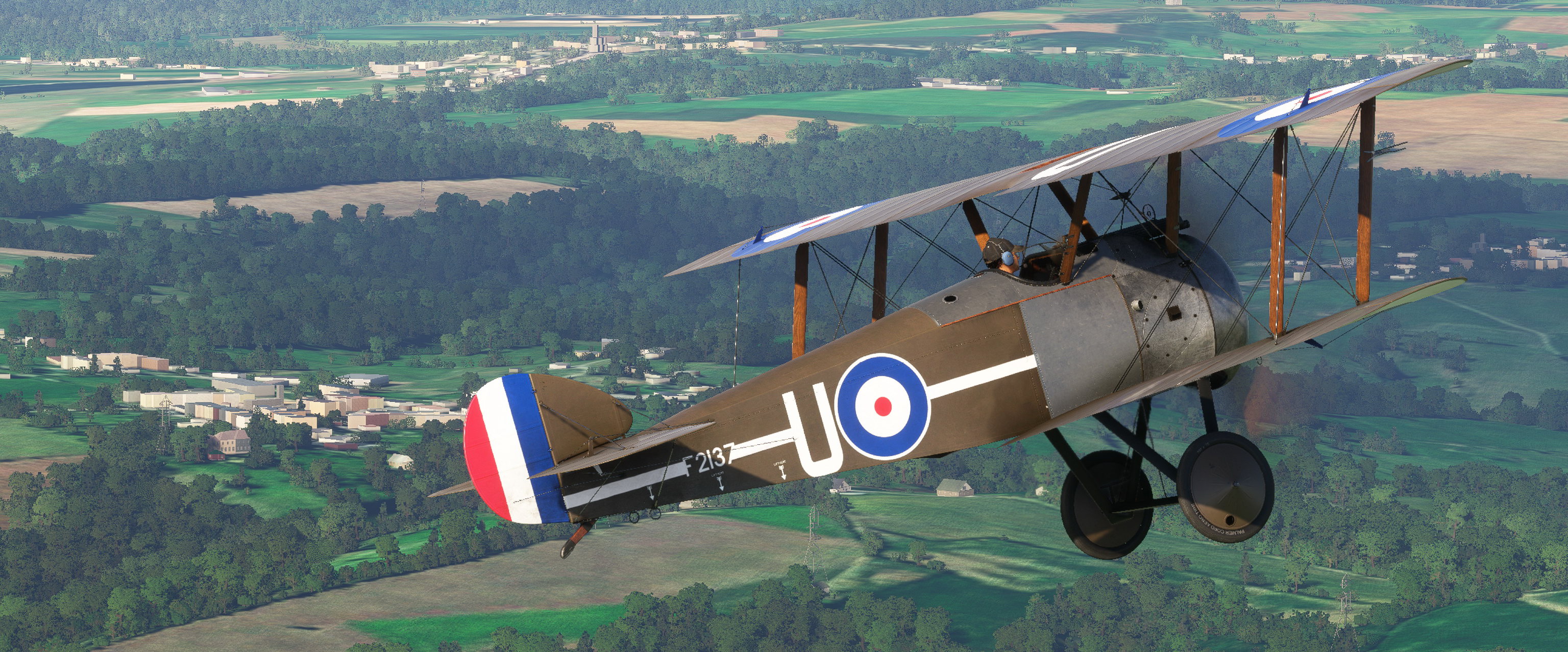I just uploaded my first three repaints for the Camel, all on FS.2 now:

Camel E1496 N, as flown by Captain Willam Hilborn of No.66 Sqn RAF in July 1918. Captain William Carrall Hilborn (whose middle and last names are variously spelled Carroll and Hillborn) (5 July 1898 – 26 August 1918) was a World War I Canadian flying ace. He was raised as a western Canadian pioneer. He undertook his own aviation education in his eagerness to join the Royal Flying Corps. He overcame physical problems and a tendency toward airsickness to become a wingman to famed Canadian ace William George Barker. After scoring seven victories in Italy, Hilborn died on 26 August 1918, of injuries received in a flying accident.

Camel B5406 as flown by Lt Sadhar H. Malik of No.28 Squadron RFC, based at Droglant, France in October 1917. Mr. Malik was born Nov. 23, 1894, in Rawalpindi, in what is now Pakistan. After receiving his secondary school education at Eastbourne College in England, he attended Oxford University in 1912. He left the university to join the Royal Air Force and was the first Indian to receive a commission in the R.A.F. in World War I. As an observant Sikh, he wore a turban instead of a helmet when flying. As a fighter pilot, he was credited with shooting down six enemy planes, two with the Camel. After he developed an allergy to the castor oil lubricant of the Camel, he continued flying Bristol F.2b fighters for the rest of the war
Mr. Malik served as Joint Secretary to the Government of India from 1934 to 1937 and as India's Trade Commissioner to the United States and Canada, based in New York, from 1938 to 1943. Mr. Malik was Premier of the state of Patiala from 1943 to 1947. Mr. Malik became the Indian Ambassador to France in 1949. He retired in 1956 and died in 1985.

Camel B3889 B1, as flown by Captain Clive Collett of No.70 Sqn RFC, based in Poperinge, Belgium in August 1917. Captain Clive Franklyn Collett MC* (28 August 1886 – 23 December 1917) was a World War I flying ace from New Zealand credited with 11 aerial Born in Blenheim, NZ, was an engineer before WW1. He was in Britain when the war broke out, and enlisted in the Royal Flying Corps in 1914. After a short stint at the front with No.18 Sqn, he returned to Britain after an accident and became a test pilot in 1916 at Orfordness. Here, he was the first British or Commonwealth military pilot to use a parachute, in a test. In July 1917 he joined No.70 Squadron, where he was known as an aggressive pilot, who shot down 11 German aircraft between July and September 1917. After being wounded, he was removed from combat, and while recovering he received the Military Cross, twice. While test flying a captured Albatros aircraft over the Firth of Forth in December 1917, he crashed and was killed.
Jan, Jan Olieslagers'plane needs a bit more TLC
















